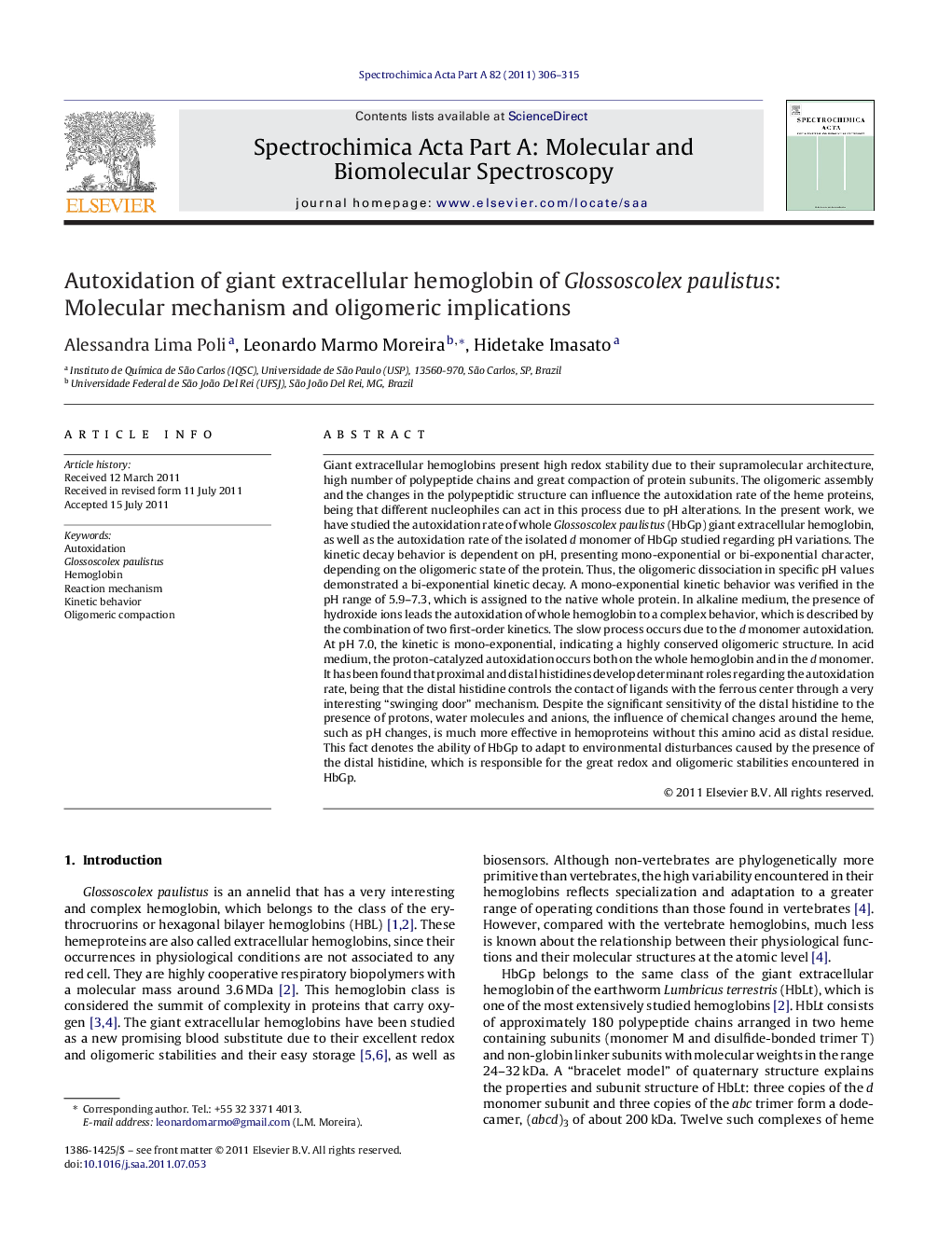| Article ID | Journal | Published Year | Pages | File Type |
|---|---|---|---|---|
| 1233306 | Spectrochimica Acta Part A: Molecular and Biomolecular Spectroscopy | 2011 | 10 Pages |
Giant extracellular hemoglobins present high redox stability due to their supramolecular architecture, high number of polypeptide chains and great compaction of protein subunits. The oligomeric assembly and the changes in the polypeptidic structure can influence the autoxidation rate of the heme proteins, being that different nucleophiles can act in this process due to pH alterations. In the present work, we have studied the autoxidation rate of whole Glossoscolex paulistus (HbGp) giant extracellular hemoglobin, as well as the autoxidation rate of the isolated d monomer of HbGp studied regarding pH variations. The kinetic decay behavior is dependent on pH, presenting mono-exponential or bi-exponential character, depending on the oligomeric state of the protein. Thus, the oligomeric dissociation in specific pH values demonstrated a bi-exponential kinetic decay. A mono-exponential kinetic behavior was verified in the pH range of 5.9–7.3, which is assigned to the native whole protein. In alkaline medium, the presence of hydroxide ions leads the autoxidation of whole hemoglobin to a complex behavior, which is described by the combination of two first-order kinetics. The slow process occurs due to the d monomer autoxidation. At pH 7.0, the kinetic is mono-exponential, indicating a highly conserved oligomeric structure. In acid medium, the proton-catalyzed autoxidation occurs both on the whole hemoglobin and in the d monomer. It has been found that proximal and distal histidines develop determinant roles regarding the autoxidation rate, being that the distal histidine controls the contact of ligands with the ferrous center through a very interesting “swinging door” mechanism. Despite the significant sensitivity of the distal histidine to the presence of protons, water molecules and anions, the influence of chemical changes around the heme, such as pH changes, is much more effective in hemoproteins without this amino acid as distal residue. This fact denotes the ability of HbGp to adapt to environmental disturbances caused by the presence of the distal histidine, which is responsible for the great redox and oligomeric stabilities encountered in HbGp.
Graphical abstractFigure optionsDownload full-size imageDownload as PowerPoint slideHighlights► Giant extracellular hemoglobins are the summit of complexity in hemoproteins. ► Autoxidation is one of the most relevant chemical processes in hemoproteins. ► Kinetic and spectroscopic studies of autoxidation are a multidisciplinary area. ► HbGp is an auspicious prototype of blood substitute and biosensor.
